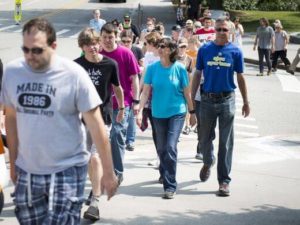- The Meaning of Critical Thinking: A Key Skill for Navigating Today’s Information Landscape - November 3, 2025
- Grandparents Can Develop Activist Grandchildren - September 29, 2025
- Top Six Reasons Credit Union Benefits Are a Smart Choice Over Banks - August 18, 2025
Last Updated on September 23, 2025
Learn about effective activism, a method to make sure your activism makes an impact.
In my post, At the Intersection of Altruism and Economics, I discussed a method to make sure you get the best impact for your charitable contributions. Effective altruism is when your donations impact many people, make a big impact, and potentially, help a cause that is overlooked. Your contributions go to the need, not to a CEO’s salary.
Now let’s look at the intersection of activism and economics, which I call effective activism. The same principles can be applied so that your activism impacts many people, makes a big impact, and potentially, helps a cause that is overlooked.
Activism and Economics
At the intersection of activism and economics is effective activism. Effective activism criteria maximize the odds that your efforts will dramatically improve a vast number of lives, make a change, and serve neglected causes.
What if we apply the effective activism criteria as we make decisions about where to donate our time? In his book Doing Good Better, William MacCaskill, one of the founders of the effective altruism movement, recommends we use the same criteria for effective activism, with one addition. He adds ‘personal fit’ as a criterion,
Given your skills, resources, knowledge, connections, and passions, how likely are you to make a large difference in this area?
Evaluating Your Impact
Right after the Charlottesville murder of activist Heather Heyer, a white supremacist group applied for a permit for a rally near a Civil War statue in a southern town. Linda and her husband showed up for the counter-protest along with 3000 people and fewer than 20 white supremacists. It wasn’t an easy decision for Linda to enter into this type of protest, especially in the wake of the violence in Charlottesville. But she decided to take the chance to stand up against white supremacy. Thousands waited with protest signs, and it was almost comical when just a few white supremacists showed up on the other side of the street.
Let’s evaluate Linda’s counter-protest efforts using the EA criteria.
Will it dramatically improve a huge number of lives?
Linda’s participation in the rally likely didn’t impact any lives. It made her feel that she had stood up for justice, but her feelings are not a part of this evaluation. If she hadn’t shown up, would that have made a negative difference for anyone? Probably not. Linda posted pictures online to let her Facebook friends know that the counter-protest was going well, and that probably made them happy. Their feelings don’t count, either. Overall score = 0 lives impacted.
How much change can you make?
What change was the goal of the counter-protest? Linda’s personal goal was to counter racist attitudes in her area with racial justice. Showing up in support of those who don’t have her protections is essential to her. But did the counter-protest change attitudes toward racism in her city? I’m guessing not. And one of the problems with this type of activism is that we don’t have any measure of whether it worked or not. No one came along behind and surveyed people in her city or people who witnessed the counter-protest or watched the news reports. Overall score = No change.
How much is the cause overlooked?
Racial justice is not a neglected area of social change. In fact, at that particular time, it dominated the news. We’ve been focused on racial justice for decades and have made progress, but unfortunately, populism has fanned the issue into flame. That has increased focus on the subject. I might argue that participation by white people in racial justice needs more attention, but Linda’s small county has a Standing Up for Racial Justice (white people for racial justice) organization. Overall score = Not Overlooked.
Will my skills and passions lead to making a difference?
For the reasons described above, it was a match with her values and hopes for her community. This was not a personal fit for Linda because she is an introvert who does not enjoy large crowds. She also had concerns for her own safety. Overall score = Although her passions and skills were adequate, the change for change was low.
Consider Your Impact
Linda’s story reminds us that even though an activism opportunity seems impactful, it might not make a difference at all. Linda decided to refocus her activism for racial justice and use her time differently.
As you consider where to spend your time for activism, use this approach to ensure you are making the most difference possible. As just one person in the fight, match up your personal fit against what you are passionate about and feel good that you are doing what you can.
READ NEXT
How to Start in Activism: Are You Making an Impact?
How To Resolve Ethical Dilemmas in Work for the Greater Good
At the Intersection of Crafting and Activism
How To Nudge People To Make Better Financial Decisions
How to Get Started in Activism




